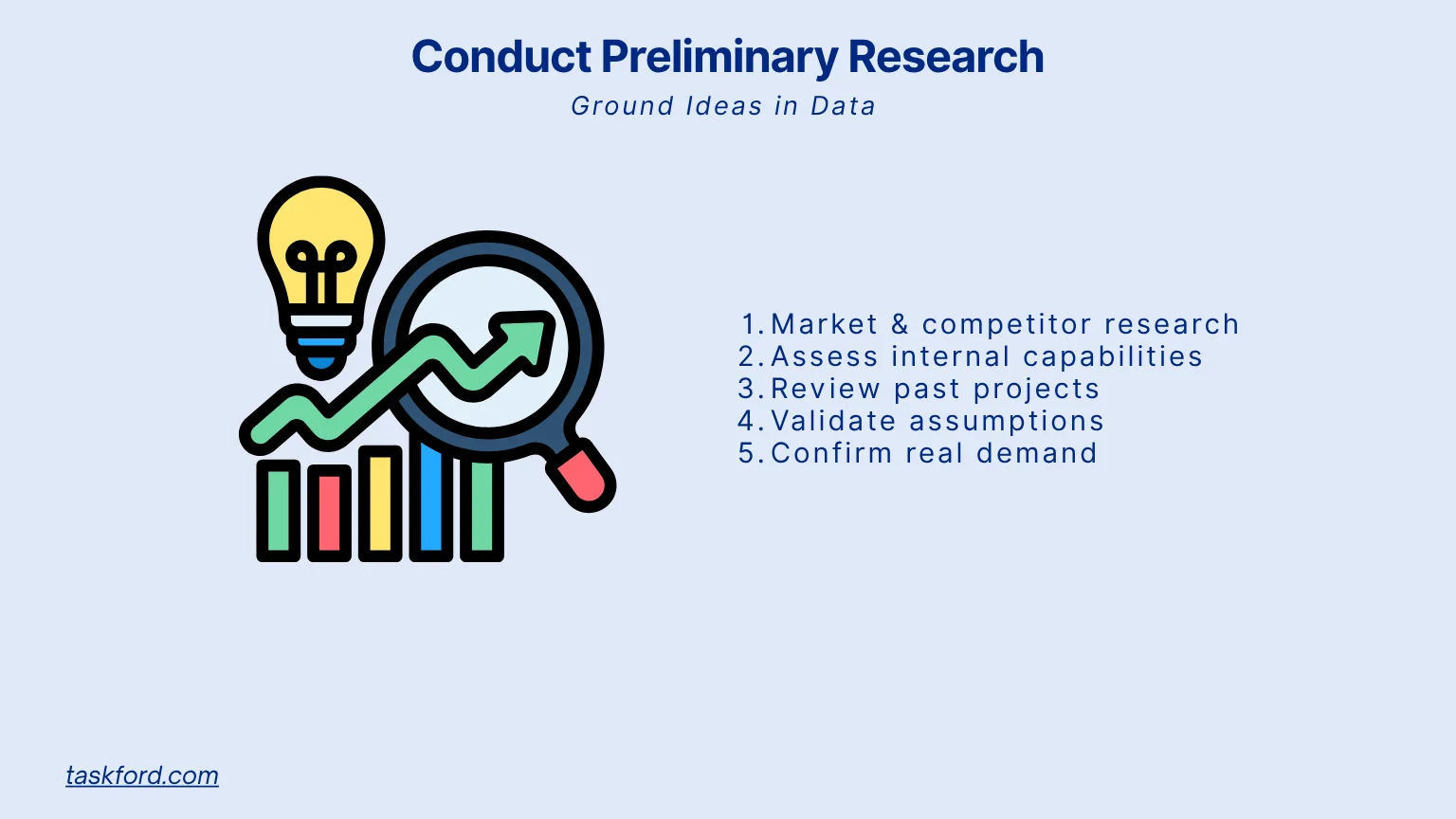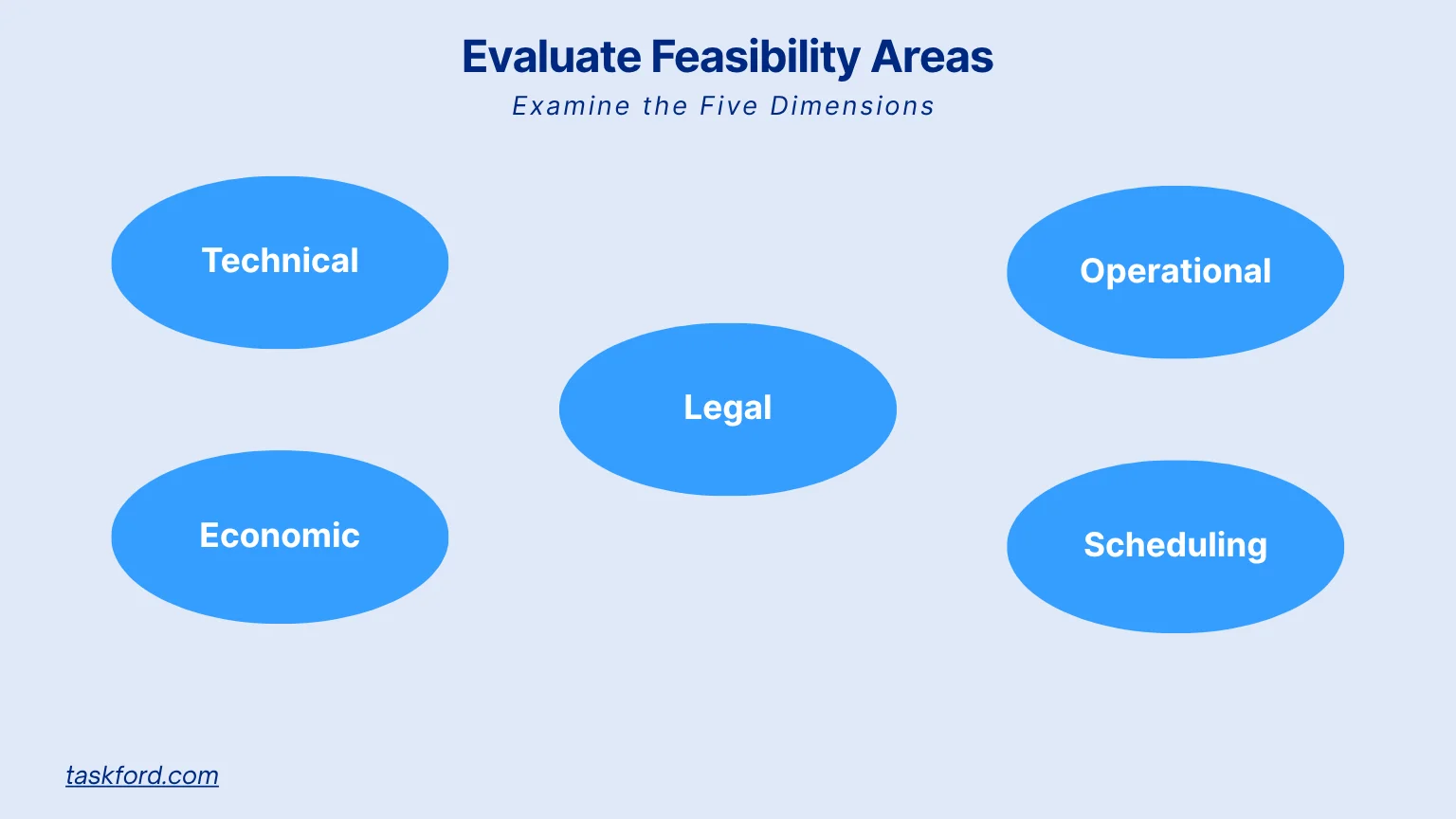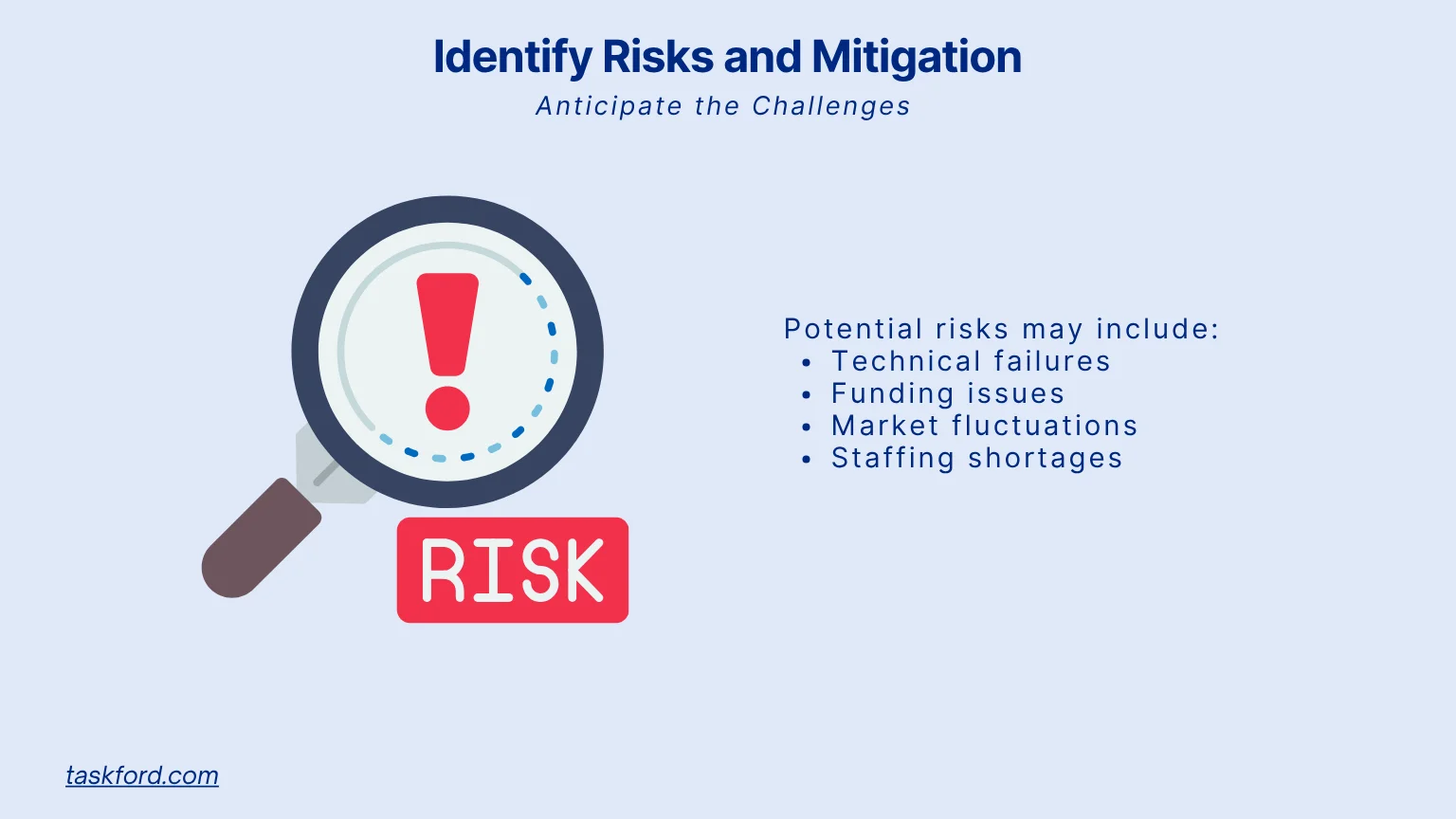How To Conduct a Feasibility Study – The Element Most Teams Forget
A detailed guide on how to conduct a feasibility study in project management, covering purpose, key stages, examples, and benefits for decision-making.
Most projects begin with excitement and confidence. A great idea sparks interest, plans start forming, and teams rush to get things moving. Yet many of these projects fail long before completion, not because the idea was bad, but because no one stopped to ask the most important question: Is it actually feasible?
A Feasibility Study is one of the most important parts of Project Initiation. It determines whether a project can realistically succeed within its constraints. Despite its importance, it is often skipped. When that happens, teams end up dealing with unexpected costs, missed deadlines, or technical limitations that could have been caught early.
This guide explains what a Feasibility Study is, why so many teams overlook it, who should conduct one, and how to perform it step by step.
What Is a Feasibility Study in Project Management?
A Feasibility Study is a structured process used to determine whether a proposed project or idea is viable. It helps project managers, stakeholders, and investors decide whether to move forward, adjust the plan, or stop before major resources are committed. It is an essential part of Project Initiation.
At its core, a feasibility study asks three key questions:
- Can the project be done with available resources?
- Should it be done given the financial and operational impact?
- Is it the right time to execute it?
The outcome is a clear recommendation: proceed, revise, or reject. Rather than relying on enthusiasm, it relies on data, analysis, and realistic evaluation. In other words, it provides a solid foundation for project management decisions.
Why Most Teams Forget the Feasibility Study Stage
In practice, many organizations skip this stage of project initiation. The reasons are often simple: lack of time, overconfidence, or pressure from stakeholders to show progress.
Common reasons teams skip it
- They believe the idea is strong enough to “just start.”
- There is pressure from leadership to move fast.
- Teams see it as unnecessary paperwork.
- There is limited understanding of what a feasibility study actually involves.
The cost of skipping
When this step is ignored, the project often moves forward on assumptions. Budgets balloon, schedules slip, and teams discover problems that could have been predicted. A new software product might reach development only to fail because of legal restrictions or lack of market demand. A construction project might break ground before realizing zoning requirements weren’t met.
The feasibility study acts as the filter that prevents such mistakes. It ensures the project idea passes through practical, financial, and operational tests before money and time are spent.
Key Components of a Feasibility Study
A comprehensive feasibility study covers several areas of analysis. Each area answers a different question about the project’s potential for success.
1. Technical Feasibility
This determines whether the technology, tools, and expertise required for the project are available. It answers: Can we actually build or deliver this with our current capabilities?
For example, a company planning to launch an AI-powered service must confirm that its existing infrastructure can handle data processing requirements. If not, it needs to identify what upgrades are necessary and at what cost.
2. Economic Feasibility
This examines whether the project makes financial sense. It involves cost-benefit analysis, ROI forecasting, and identifying funding sources. Key questions include:
- Are projected returns worth the investment?
- When will the project break even?
- What are the long-term operational costs?
Economic feasibility provides the hard numbers decision-makers need to justify moving forward.
3. Legal Feasibility
No project exists in a vacuum. Legal feasibility ensures the plan complies with laws, regulations, and industry standards. This may include labor laws, environmental regulations, or data protection rules. A feasibility study that overlooks this area risks costly delays and potential penalties later on.
4. Operational Feasibility
Even if a project is technically and financially viable, it still must fit within existing operations. This component evaluates whether teams, processes, and organizational culture can support implementation. It answers: Can we manage this without disrupting other business functions?
Operational feasibility also considers staffing, training needs, and changes to internal procedures.
5. Scheduling Feasibility
Timing matters. This component determines whether the project timeline is realistic. It examines dependencies, available manpower, and seasonal factors. A project that looks perfect on paper can fail simply because there is not enough time to complete it effectively.
Who Should Conduct a Feasibility Study
A feasibility study involves different areas of expertise. The goal is to gather accurate data and interpret it objectively.
- Project Manager: Coordinates the study, defines objectives, and ensures alignment with organizational strategy.
- Financial Analyst or Accountant: Evaluates cost structures, funding options, and ROI models.
- Technical Expert or Engineer: Reviews whether technology and infrastructure requirements can be met.
- Legal or Compliance Officer: Checks for potential legal or regulatory issues.
- Operations or HR Representative: Assesses resource capacity and potential impact on staffing or processes.
- External Consultant (optional): Adds neutrality and expertise, especially in large or complex projects.
In smaller organizations, one person may cover several roles, but maintaining objectivity is crucial. Bias or overconfidence can undermine the entire process.
How To Conduct a Feasibility Study Step by Step

Step 1: Define the Project and Its Objectives
Every feasibility study begins with a clear understanding of what you’re trying to achieve. Define the core problem your project aims to solve and what success looks like. Set measurable objectives such as revenue targets, user adoption rates, or operational efficiency improvements to guide your evaluation.
This step also involves identifying key stakeholders and outlining the project scope. A well-defined scope prevents the study from drifting into unrelated areas and keeps the analysis focused on practical outcomes.
Step 2: Conduct Preliminary Research

Before diving into detailed analysis, gather baseline information about your market, competitors, and internal capabilities. This includes reviewing existing data, past project outcomes, and available technology or infrastructure.
Market research should confirm that there’s genuine demand or need for the proposed project. For internal projects, analyze whether your organization already has the tools, skills, and capacity to execute. The goal at this stage is to ensure the idea is grounded in reality, not just assumptions.
Step 3: Evaluate the Main Feasibility Areas

The heart of your feasibility study lies in evaluating five key dimensions:
- Technical Feasibility: Can the idea be built or implemented using current technology and available expertise? Identify potential technical barriers and estimate the resources required to overcome them.
- Economic Feasibility: Is the project financially viable? Compare estimated costs with projected returns. Use techniques like cost-benefit analysis and break-even calculations to support your conclusion.
- Legal Feasibility: Are there any legal or regulatory issues that might affect execution? This may include compliance with labor laws, data protection standards, or licensing requirements.
- Operational Feasibility: Will the proposed change fit into existing operations? Assess whether teams can adapt, and whether new processes or staff training will be needed.
- Scheduling Feasibility: Is the proposed timeline achievable? Examine dependencies, resource availability, and external constraints that could delay completion.
Each dimension should be rated for risk and practicality. Together, they form a complete picture of whether the project can succeed under current conditions.
Step 4: Identify Risks and Develop Mitigation Strategies

Every project carries risks, but a strong feasibility study anticipates them early. List all potential risks like technical failures, funding issues, market fluctuations, or staffing shortages and evaluate their likelihood and impact.
Then, outline mitigation strategies for each. For instance, if supplier reliability is a concern, propose backup vendors. If market demand is uncertain, plan for a limited pilot launch first. This proactive thinking doesn’t just strengthen the feasibility study, it shows project stakeholders you’ve thought beyond the surface.
Step 5: Prepare and Present the Feasibility Report
Once all findings are compiled, summarize them in a structured report. A good feasibility report includes:
- An executive summary of goals and key findings.
- Detailed results of each feasibility area.
- Cost estimates, risk assessments, and recommendations.
- Visuals such as charts, tables, or scenario comparisons for clarity.
The report should clearly indicate whether the project is feasible, conditionally feasible (with adjustments), or not feasible at all. Present the report to decision-makers in a way that encourages discussion rather than just approval.
Step 6: Make the Final Decision
The final stage is to decide whether to proceed, modify, or abandon the project. This decision should rely on data, not enthusiasm. If the feasibility study reveals significant challenges, consider redesigning parts of the project instead of forcing it forward.
A well-documented feasibility study helps you justify your choice whether to move ahead confidently, seek additional research, or stop before committing more resources. In project management, this disciplined approach ensures that the project initiation phase is built on evidence, not guesswork.
Tools and Techniques for Conducting a Feasibility Study
Several tools can make the process more accurate and efficient:
- Financial tools: spreadsheets, cost estimators, or ROI calculators.
- Market analysis tools: surveys, benchmarking reports, and customer interviews.
- Risk assessment frameworks: SWOT, PESTLE, or sensitivity analysis.
- Project management software: Gantt charts, resource allocation tools, and scheduling programs to test timing and capacity.
These tools turn raw data into insights that help teams make informed decisions.
Tip: TaskFord is a comprehensive project management and resource planning platform that provides robust features for teams of all sizes like Gantt chart for clear visibility while conducting a Feasibility Study.

Common Mistakes When Conducting a Feasibility Study
Even when teams attempt a feasibility study, errors in execution can weaken results.
- Basing conclusions on assumptions instead of verified data.
- Neglecting stakeholder input, which can cause resistance later.
- Treating it as a one-time document rather than a living reference during the project lifecycle.
- Failing to update the study when conditions change.
Avoiding these pitfalls ensures the study remains a reliable decision-making tool throughout the project.
Benefits of Conducting a Thorough Feasibility Study
A well-executed feasibility study delivers clear, measurable advantages:
- Reduced risk: Identifies weak points early and prevents costly surprises.
- Informed investment: Provides data to justify funding and resource allocation.
- Improved stakeholder confidence: Builds trust by showing decisions are based on evidence.
- Efficient project initiation: Clarifies direction before planning begins.
- Better alignment: Ensures all departments understand the project’s value and limitations.
In essence, it is both a safety net and a roadmap for successful project management.
FAQ: Feasibility Study in Project Management
1. What is the difference between a Feasibility Study and a Business Case?
A feasibility study determines if a project can be done, while a business case explains why it should be done. The feasibility study comes first and provides data that informs the business case.
2. How long does a Feasibility Study usually take?
Depending on the project’s size and complexity, it can take anywhere from a few weeks to several months. The more variables involved, the more time needed for accurate assessment.
3. Who is responsible for approving the Feasibility Study results?
Typically, senior management or key stakeholders review and approve the report before giving the go-ahead for planning and implementation.
4. Can small businesses or startups conduct Feasibility Studies?
Yes. Even basic feasibility studies can save small businesses from costly mistakes. They can be scaled to fit available resources and still provide valuable insight.
5. Should a Feasibility Study be updated?
Yes. Market conditions, costs, and technologies change. Revisiting the study before major milestones keeps it relevant and accurate.
Conclusion
A Feasibility Study is not an optional extra in project management. It is a critical checkpoint that determines whether a project should move forward. Teams that take time to evaluate feasibility save time, money, and frustration later. They also gain a clearer understanding of what success actually requires.
Before launching your next big initiative, stop and conduct the step most teams forget. A thorough Feasibility Study can be the difference between a project that struggles and one that succeeds with confidence.
Learn more
-
What is Project Management? The Complete First Guide for Newbies
-
10 Leading Project Management Tools for Remote Teams - Expert Reviews 2026
-
What is a Project Milestone? A Detailed Guide to Effective Project Management
Subscribe for Expert Tips
Unlock expert insights and stay ahead with TaskFord. Sign up now to receive valuable tips, strategies, and updates directly in your inbox.